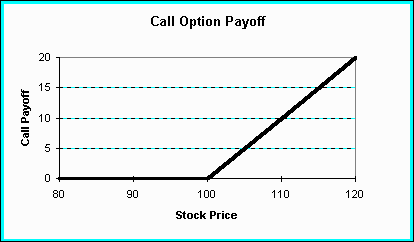In this last section we will look at hedging with
options contracts. In the last two sections of risk management we discussed
forwards, futures and swaps. All are similar in that two parties agree to make
a transaction on a future date and are obligated to complete the transaction. An
option contract on the other hand, is an agreement that gives the owner the
right but not the obligation to buy or sell, depending on the option type, an
underlying asset at a specified future date.
There are two types of options, calls and puts. The
owner of the call option has the right but not the obligation to buy an
underlying asset at a fixed price, called the strike or exercise price. The
owner of the put option has the right, but not the obligation, to sell an
underlying asset at a fixed price. The act of buying or selling an underlying
asset is known as exercising the option.
There are American options and European options, and
they only refer to when exercising the option takes place. For example, in the
American options, they can be exercised any time up to the expiration date. In
the European options, they can only be exercised on the expiration date, not
before.
So the buyer of the call option has the right to buy
the underlying asset, like a stock, by paying the strike price. The seller of
the call is obligated to deliver the asset and accepts the strike price from
the buyer, if the buyer chooses to exercise the right. By the same token, a
buyer of a put option has the right to sell the underlying asset and receive
the strike price. The seller of the put must accept the underlying security and
pays the strike price.
In forward contracts both parties are obligated to
make the transaction, one delivers the asset the other pays. With options, the
transaction occurs only if the owner chooses to exercise it. With forward
contracts no money changes hands, with options; the buyer of a contract gains a
valuable right and pays the seller an option premium.
Above we see the payoff profile for a call option from
the point of view of the owner. The horizontal axis shows the difference
between the asset’s value and the strike price on the option. If the price of
the underlying rises above the strike price, the owner will exercise the
option. The stock price is > the strike price then essentially the buyer
buys an asset for $100 that is actually worth >$100.
The following graph shows the payoff profile for on a
call option from a seller’s point of view. Call options are a zero sum game, in
that , the seller’s payoff profile is the opposite of the buyer’s.
Suppose a company has a risk profile that looks like
the graph below. If the company wishes to hedge against adverse stock price
movements then it can buy a put option as shown in the following graph. By
buying a put option the company has eliminated the downside risk in adverse
price movements.
In the previous part we discussed that there are
futures contracts on commodities. There
are options contracts on these commodities, like futures options. When such a
contract is initiated, on say wheat, the owner receives the current futures
price. The second thing is the difference between strike price of the option
and the current futures price. The table provided from the Wall Street Journal
depicts futures options for the S&P 500 stock index, and the Eurodollar
options. Notice that the first column is the strike price. The next three
columns are call option prices for three different months of expiration.
In conclusion we can say that the motivation for risk
management stems from the fact that firms will frequently come across to undesirable
risk. Because there is volatility today in many financial variables, such as
interest rates, exchange rates, and commodity prices, the firm has tools
available to reduce this risk.






